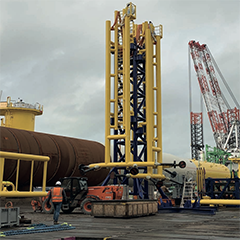The offshore wind energy industry has seen enormous growth in recent years and it doesn’t look to be slowing down anytime soon. Those in the industry will know the stats: the offshore wind energy market is forecast to reach $42bn by 2025, growing at a CAGR of 13.6% from 2020 to 2025.
The focus for clean, renewable energy is growing worldwide, evidenced by President Biden who in January signed an Executive Order that includes doubling offshore wind power generation in U.S federal waters by 2030. In October last year the UK Government, already home to the largest offshore wind market in the world, announced a £160m injection into the industry to upgrade ports and infrastructure.
Vietnam has big plans to increase its proportion of power from wind and solar from 10% in 2019 to 42% of the national grid by 2045. Although most current locations are onshore, they are already making great strides to achieve that goal ahead of schedule, with their next big push in offshore wind off their southern coast.
Renewable energy is a global cause, a skim through renewable news sites reveals new projects being commissioned on an almost weekly basis and with that progress comes the need for preventative maintenance
and protection.
The push for offshore wind takes advantage of the power of the wind produced at sea, moving at a much higher and more consistent speed thanks to the open space and absence of structures. What is a benefit to production however, poses a logistical disadvantage to construction and maintenance along with an aggressive corrosive environment?



























